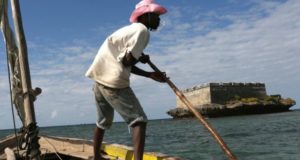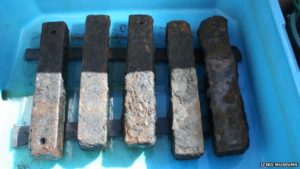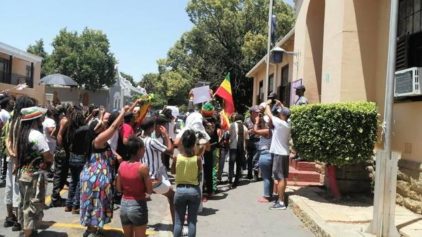
The ceremony will take place on Tuesday on Cape Town’s popular Clifton beach.
It will be a solemn ceremony and a grim reminder of the dark history that so many African ancestors were forced to experience.
Packed on the boat, presumably in shackles and other restraints, the enslaved people on board the ship back in 1794 had extremely limited chances of escaping a watery grave when the vessel hit turbulent waters during its trip from Mozambique to Brazil.
The discovery of the Portuguese ship, Sao Jose-Paquete de Africa, is a truly historical moment as researchers say it marks the first time that the remains of a slave ship that sank with enslaved people on board has been identified.
But as the discovery marks a historic first today, it also signifies a bleak and “terrible” past.
“It’s profound and terrible to feel this is one of the most beautiful beaches in the whole world and within such a short distance lie the bodies of 200 slaves who died there,” 80-year-old Albie Sachs, a former constitutional court judge, said on Monday, according to The Guardian.
Sachs will give a speech welcoming an audience of diplomats, activists and community leaders at the ceremony.
Reports indicate that while 212 enslaved people died in the shipwreck, roughly 300 survived but their futures were not bright and they couldn’t celebrate surviving the tragedy. They knew all too well what their survival meant.
These people were still considered property. They were not viewed as survivors, but rather they were viewed as the goods and products that managed to remain in sellable condition. The roughly 300 survivors were shortly thereafter resold into slavery in the Cape. The ship’s crew was also among those rescued on that day.
While the realization of the ship’s identity is a new finding, the knowledge of the wreckage isn’t something quite as new. In the mid-1980s, an amateur treasure-hunter found the remains but misidentified the wreckage as the remains of a Dutch vessel.
In 2011, the truth about the sunken ship’s identity started to surface.
Jaco Boshoff, a maritime archaeologist, uncovered the captain’s account of the ship in local archives, according to The Guardian. The archives contained accounts of how some people on the ship managed to make “ropes and baskets” in order to save some groups on board the ship until it “broke to pieces” around “five in the evening.”
Once old artifacts like copper fastenings and chopper sheathing also started to emerge along with iron ballast, the ship’s identify became clear. The iron ballast were frequently used on ships transporting enslaved people in order to add more weight to the vessel. People are not as dense as the usual types of cargo that would have provided enough weight to keep the ship weighed down.
It was enough to deem the discovery a remarkable one, but Boshoff continued his research.
“The more information we get, the better,” Boshoff, the co-originator of the Slave Wrecks Project, said, according to The Guardian. “The memorial service will be a bit more emotional, but when we start work again we’ll have to dial back the emotion.”
It’s because, according to Boshoff, the wreckage may contain more than just gut wrenching realizations of slavery’s existence but it could also provide truly groundbreaking new information about the slave trade.

Researchers and archaeologists have already begun recovering artifacts from the ship’s wreckage and hope that they will provide even more insight about a troubling past that is too often ignored or hidden away.
Researchers have no intention on letting that happen with this ship, however. Some of the artifacts that have been uncovered are already reportedly being loaned to Washington’s Smithsonian National Museum of African American History.
Despite the wreck reminding everyone about the tragedies of slavery, Sachs says the ceremony itself and the joint efforts to compile information about the ship will serve as the ray of light so desperately needed during such a wave of emotions.
“There is wonderful cooperation between the Smithsonian and the Iziko Museums of South Africa,” Sachs said. “People are diving together and compiling the information together. This is a beautiful example of present-day globalization recovering an example of terrible globalization from the 18th century. It’s healing to have people getting together to memorialize the dead.”


